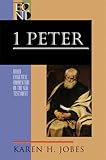The Baker Exegetical Commentary series is one of my favourites in terms of layout, with very nice typesetting which sets it apart from series like the Word Biblical Commentary or even the Pillar New Testament Commentary series. It is good to see newer series following suit. The full text of the book is included in blocks at the start of each new section, usually the author’s translation. Comments are on groups of verses, sometimes up to six at a time. The commentary does use Greek characters, usually transliterated and translated (except in the footnotes).
Introduction
The introduction is surprisingly concise given the size of this commentary, although it touches on the subjects you will expect. He does include a table where he attempts to date all the incidents in the gospel. He breaks the book into two halves, the first as the book of signs, and the second the book of glory. In the first part there are seven “signs”, seven “I AM statements”, and quite possibly seven “witnesses” too.
Commentary
I read through this commentary in parallel with Don Carson’s commentary on John in the Pillar Commentary Series, and the similarities were striking. Not only are the same conclusions reached, but often the structure of the argument is extremely close. Disagreements between the two are rare, and usually only minor in any case. In many ways, these could be called “synoptic commentaries” – Köstenberger and Carson approach John from very similar points of view, unsurprisingly so, since Köstenberger refers to Carson as his mentor. He also highly rates the commentary of Herman Ridderbos.
Carson interacts with other commentators to disagree with them, whereas Köstenberger prefers to highlight the best of their comments. Carson says almost everything in the main text, while Köstenberger utilises footnotes a lot more. Sometimes well over half the page is taken up with footnotes. However, lists of references to other commentators whose views he is quoting or summarising do not get relegated to footnotes, which means that some sentences can get swamped amidst a mass of attributions. This means that, despite the two books having roughly the same size, reading through Köstenberger will be much quicker. Carson is happy to go off on excursuses teasing out the meaning of difficult phrases, while Köstenberger is much more concise (e.g. Carson spends 5 pages on “water and spirit” in 3:5, Köstenberger a paragraph or so).
In some ways, this functions as a digest of other commentaries on John, as he often selects good quotes from other commentators or summarises their arguments, without the need for him to add additional comments of his own (except in the footnotes).
There are a couple of features that make Köstenberger unique though. He has more interest than Carson in things like geography and historical details (for example, he fills us in on the types of lanterns and torches in 18:3). He is also very interested in placing events in the year they happened (it seems to be a couple of years later than others I have read – he has Jesus starting his ministry aged 33). One surprising feature, perhaps, is his choice not to translate or provide commentary on the story of the woman caught in adultery (though he does include an excursus on it). Clearly, he feels strongly that this should not be considered part of the canon of Scripture.
Conclusion
I guess the trouble with this commentary is that it is difficult to recommend it instead of Carson’s and it is also difficult to recommend it as well as Carson’s due to their close agreement on so many matters. His key advantage is his succinctness in the main text, allowing him to make very direct points that in Carson’s commentary are spread out over several pages of interaction with other views. This does not mean though that Köstenberger’s commentary is shallow. The copious footnotes allow you to choose the points at which you want to go deeper.



